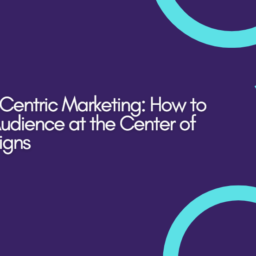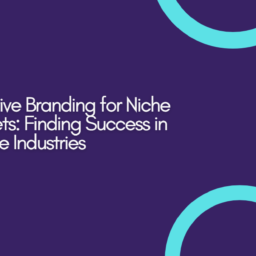1. Predictive Customer Lifetime Value (pCLTV)
What it is: Traditional CLTV measures the historical revenue generated by a customer. Predictive CLTV, however, uses AI to forecast the future revenue a customer is expected to generate over their entire relationship with your business.
Why it’s crucial for growth: Knowing the potential future value of a customer allows you to:
- Allocate marketing spend more intelligently, focusing acquisition efforts on high-value segments.
- Tailor retention strategies for at-risk, high-value customers.
- Prioritize customer segments for personalized offers and upsells.
How AI elevates it:
- Data Synthesis: AI analyzes vast amounts of historical data (purchase frequency, average order value, engagement patterns, demographic data, product interactions, support tickets) to build sophisticated predictive models.
- Dynamic Segmentation: AI can dynamically segment customers into value tiers (e.g., “high-potential,” “at-risk,” “loyal”) and update these segments in real-time as customer behavior changes.
- Forecasting Accuracy: Machine learning algorithms continually learn and refine their predictions, offering increasingly accurate forecasts of future customer value.
2. Optimized Customer Acquisition Cost (CAC)
What it is: CAC measures the total cost (marketing, sales, overhead) incurred to acquire a new customer. Optimizing CAC means acquiring customers at the lowest possible cost while maintaining quality.
Why it’s crucial for growth: A lower CAC directly translates to higher profitability and allows for more aggressive, yet sustainable, scaling of acquisition efforts.
How AI elevates it:
- Granular Attribution: AI can go beyond last-click attribution, understanding the complex interplay of touchpoints across the customer journey to attribute costs more accurately to various channels and campaigns.
- Real-time Bid Optimization: AI algorithms within ad platforms (like Google Ads’ Smart Bidding or Meta’s Advantage+ campaigns) automatically adjust bids in real-time to acquire customers at the optimal cost, often identifying patterns humans would miss.
- Audience Prediction: AI predicts which audience segments are most likely to convert efficiently, allowing for hyper-targeted advertising that minimizes wasted spend on low-potential leads.
- Creative Performance Analysis: AI can analyze which creative elements (images, headlines, CTAs) resonate most with specific audiences and drive the lowest CAC, then generate more high-performing variations.
3. Lead-to-Conversion Rate & Predictive Lead Scoring
What it is: This KPI tracks the percentage of leads that convert into paying customers. Predictive lead scoring, driven by AI, assigns a likelihood-to-convert score to each lead.
Why it’s crucial for growth: Efficient conversion of leads into customers is fundamental to scaling. AI-powered lead scoring ensures sales and marketing teams focus their efforts on the most promising prospects.
How AI elevates it:
- Holistic Data Analysis: AI analyzes a vast array of lead data (website behavior, email engagement, CRM interactions, social media activity, firmographics) to identify patterns indicative of high conversion potential.
- Dynamic Scoring: Unlike static rule-based scoring, AI lead scores update in real-time as a lead interacts with your brand, ensuring the score always reflects the most current likelihood to convert.
- Sales & Marketing Alignment: By identifying “hot” leads instantly, AI streamlines the handoff between marketing and sales, shortening sales cycles and improving sales team efficiency.
- Nurturing Optimization: AI can recommend the “next best action” or content piece for each lead based on their score and stage in the funnel, personalizing nurturing campaigns for maximum impact.
4. Churn Prediction & Retention Effectiveness
What it is: Churn rate measures the percentage of customers who stop using your product/service over a given period. AI-powered churn prediction identifies customers at risk before they leave. Retention effectiveness measures how well strategies designed to keep customers are performing.
Why it’s crucial for growth: Acquiring new customers is expensive; retaining existing ones is far more cost-effective for sustainable growth. Preventing churn directly boosts revenue and LTV.
How AI elevates it:
- Early Warning Systems: AI monitors subtle shifts in customer behavior (e.g., decreased login frequency, reduced feature usage, negative sentiment in support interactions) to flag at-risk customers with high accuracy.
- Root Cause Analysis: AI can analyze vast customer feedback data (surveys, reviews, support transcripts) using Natural Language Processing (NLP) to uncover the underlying reasons for dissatisfaction and potential churn.
- Personalized Intervention: Based on churn risk scores, AI can trigger automated, personalized retention campaigns (e.g., targeted offers, proactive support outreach, relevant content) designed to re-engage customers.
- Segment-Specific Strategies: AI identifies patterns in different customer segments, allowing CMOs to develop highly specific and effective retention strategies tailored to each group.
5. Marketing ROI & Attribution Modeling
What it is: Marketing ROI measures the revenue generated for every dollar spent on marketing. Attribution modeling assigns credit to the various touchpoints that contribute to a conversion.
Why it’s crucial for growth: Demonstrating clear ROI is essential for securing future budget and proving marketing’s impact on the bottom line. Accurate attribution ensures you’re investing in the channels and campaigns that truly drive results.
How AI elevates it:
- Multi-Touch Attribution: AI goes beyond simplistic single-touch models (like last-click) to understand the complex, non-linear customer journey, accurately distributing credit across all relevant marketing interactions.
- Causal AI: Emerging “causal AI” can identify not just correlations but true cause-and-effect relationships between marketing activities and business outcomes, revealing which initiatives actually drive growth.
- Budget Optimization: AI recommends optimal budget allocation across channels and campaigns based on predicted ROI, ensuring every dollar is working as hard as possible.
- Real-time Performance Adjustments: AI continuously monitors campaign performance against ROI goals and can make automatic adjustments to bids, targeting, or creative to maximize returns.
For the modern CMO, AI isn’t just a tool; it’s the nervous system of a truly growth-focused marketing organization. By leveraging AI to track and optimize these 5 critical KPIs, you gain unprecedented visibility, predictive power, and the ability to scale your marketing efforts with intelligence and precision, ensuring sustainable, profitable growth for your business.




